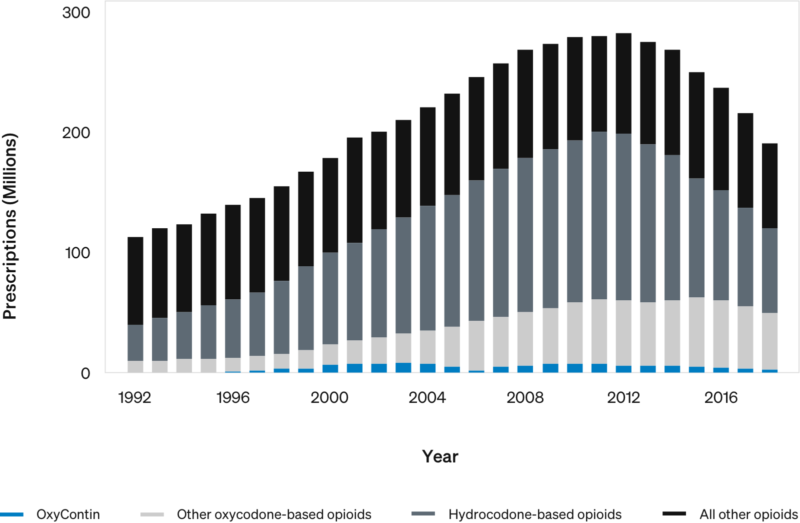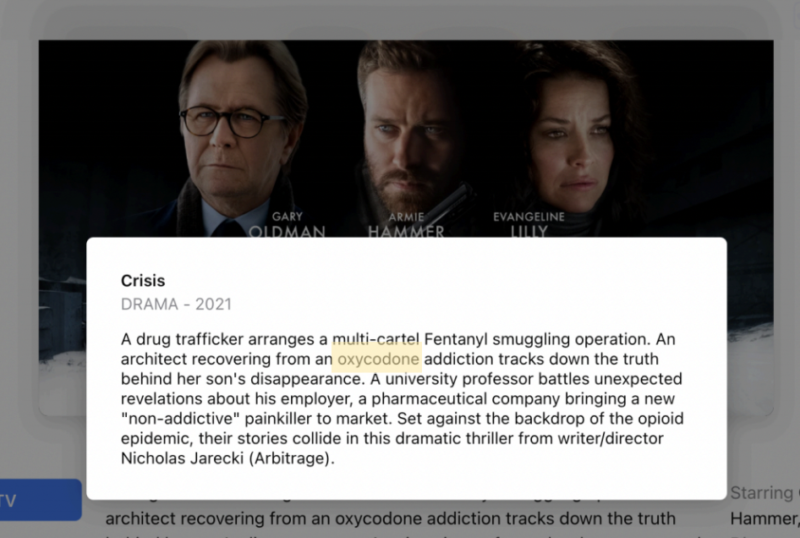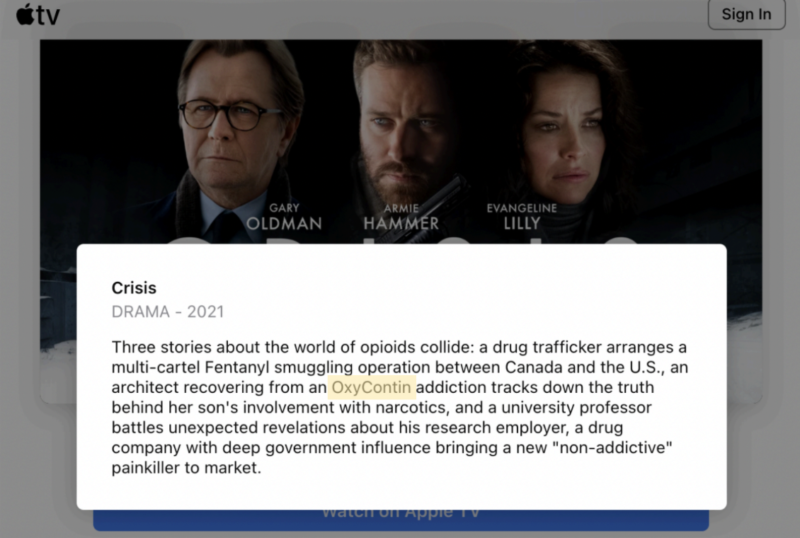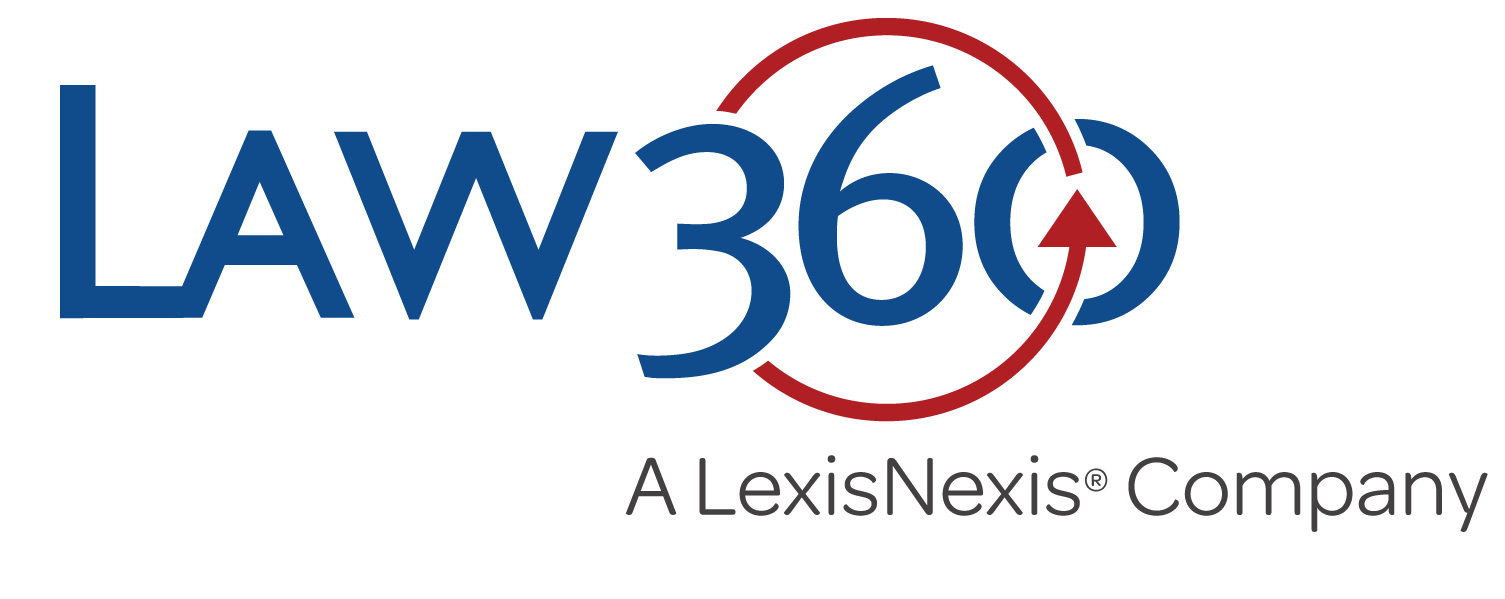This website addresses questions, corrects falsehoods and sets the record straight based on publicly available, verifiable information (here is the announcement for the launch of this website, which is maintained by the Raymond Sackler family[2]).
MARKET SHARE
How Can OxyContin Be Responsible for Opioid Crisis When the Medicine Was Never More Than 4% of Prescriptions for Opioids?
“Hydrocodone is the most frequently prescribed opioid in the United States and is associated with more drug abuse and diversion than any other licit or illicit opioid.”
DEA drug Fact Sheet[3]
OxyConfusion
“OxyContin” Often Confused With “oxycodone” & Prescription Opioids Generally
Media reports and entertainment programs frequently use OxyContin as a description for all prescription opioids — often confusing OxyContin with the generic medicine oxycodone that was first introduced in 1916.[4]
News outlets and entertainment programs have corrected this mistake. For example, this Apple TV description for the film “Crisis” erroneously included “OxyContin” – but the actual movie only ever said “oxycodone” or “oxy.”[5]
Errors in Lawsuits Took on Life of Their Own
The false narrative gained further traction in 2018 when Massachusetts became the first state to name the Sackler family in lawsuits against Purdue. That lawsuit included numerous false claims that were quickly copied by other states.
Nearly every news outlet has Made corrections about OxyContin, Purdue Pharma & the Sackler family
Sackler Family Proposed Contributing More Than All Profits Retained From Purdue
The proposed resolution to the litigation is intended to provide resources for communities and people in need, with the Sackler family providing at least $5.5 billion (nearly the entire amount of Purdue profits retained by the Sackler family after taxes) and also relinquishing ownership of Purdue (valued at more than $4 billion). The Sackler family regrets that OxyContin, which continues to help people suffering from chronic pain, unexpectedly became part of the opioid crisis.
Entire Opioid Industry Facing Legal Scrutiny For Manufacturing, Distributing, Dispensing & Prescribing Opioids
This first chart compares proposed settlements (by opioid manufacturers) to each company’s share of the prescription opioid market between 2006-2012, as reported by the Washington Post.[6] Purdue Pharma and the Sackler family proposed the largest opioid settlement despite accounting for less than 4% of the market. The second chart shows additional settlements proposed by opioid distributors and pharmacies.
“Most people think of Purdue Pharma when they think of the opioid epidemic, but they would be wrong to think that Purdue Pharma was the company that really fueled the opioid epidemic.”
Scott higham, Washington Post reporter, May 11, 2022[7]
| Opioid Manufacturer | Market Share[6] | Proposed Settlement |
|---|---|---|
| Mallinckrodt (subsidiary: Spec GX) | 35.7% | $700 million* |
| Teva (subsidiary: Actavis Pharma) | 32.0% | $4.25 billion |
| Endo (subsidiary: Par Pharmaceuticals) | 17.6% | $450 million |
| Purdue Pharma & Sackler Family | 3.2% | $5.5-$6 billion (+ value of Purdue) |
| Opioid Distributors/ Pharmacies | Proposed Settlement |
|---|---|
| McKesson (distributor) | $7.83 billion |
| AmerisourceBergen (distributor) | $6.38 billion |
| Cardinal Health (distributor) | $6.35 billion |
| Walgreens (pharmacy) | $5.7 billion |
| CVS (pharmacy) | $5 billion |
| Walmart (pharmacy | $3.1 billion |
| Rite Aid (pharmacy) | N/A * |
HISTORY
OxyContin Was Introduced in 1996, Long After Steady Increase in Prescribing Opioids
Prescription opioids have been used to treat pain since morphine[8] was invented in 1804 (and opioids have been used to treat pain since the Sumerians discovered poppy in 3400BC[9]). Beginning in the 1970s, opioid prescriptions began increasing significantly — with oxycodone prescriptions increasing by 40% and hydromorphone prescriptions increasing by 67% in just six years between 1979 and 1985.[10]
OxyContin label always included the Schedule II designation defined by the DEA as having risk of addiction and dependence.[11]
“The court of public opinion is sometimes the most powerful court.”
MIKE MOORE, PLAINTIFF’S ATTORNEY – DECEMBER 16, 2018[12]
Despite OxyContin’s small market share, plaintiffs’ lawyers decided to intentionally target Purdue and the Sackler family – and they were candid about their approach and strategy. For years, the news media and plaintiffs’ lawyers have falsely blamed Purdue, OxyContin and the Sackler family for causing the opioid epidemic based on hyperbolic and sensationalized attacks that are unsupported by actual evidence. Their strategically invented false narrative has succeeded.
“Experts” Knowingly Hid Ties to Plaintiffs’ Lawyers
The plaintiffs’ lawyers hired clandestine help: The most prominent, supposedly “independent” experts making misleading comments about OxyContin, Purdue and the Sackler family were actually surreptitiously being paid as litigation consultants.[13]
“Litigation is a blunt instrument; it provokes interest quicker than anything I’ve ever seen.”
“Vilification of this industry has not even begun yet.”
“This litigation will vilify them. It won’t make the companies look like they’re legitimate businesspeople. It’ll make them look like they took advantage and made billions of dollars on lots of people who died from their products.”
MIKE MOORE, PLAINTIFF’S ATTORNEY, OCTOBER 5, 2017[14]
VIDEO PRESENTATION
Abbreviated Summary
This video provides an abbreviated summary of the topics discussed throughout these pages, including the false allegation that OxyContin is responsible for creating the opioid crisis even though the medicine was never more than 4% of all opioid prescriptions (recorded in 2021).
Watch the detailed video presentations of these facts (also recorded in 2021).


























